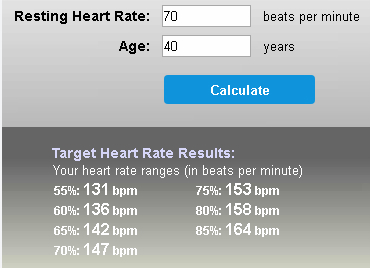Twenty minutes into an interval training session, I looked down at my watch and realized I’d accidentally shut off the exercise-tracking feature somewhere during a front squat. Ugh.
Sweating like crazy, heart pounding, I was pretty sure my workout still counted.
Does this sound like you? Are you so used to tracking your exercise that if your technology fails, it feels like it takes away from the calories you’ve burned? Or maybe you’re in the resistance camp: swiping left on all the notifications you receive about your physical activity?
Whether it was your intention or not, you probably have some form of fitness wearable or two on your person at this moment. Maybe your phone is tracking your steps, your watch is evaluating your resting heart rate, or a wrist-worn fitness gadget is collecting data about your total exercise minutes for the day.
But with so much information readily at our fingertips, what does it all mean? What matters? And how do we use this to our advantage?
Let’s take a walk through the principles behind wearable fitness technology, with a focus on what data will provide the biggest pay off toward crushing your fitness goals.
First: Understand Baseline Fitness Goals
Unless you modify the settings on these wearables, the goals your fitness gadgets are softly barking at you are likely preset to U.S. standards.
The U.S. Department for Health and Human Services Physical Activity Guidelines for 2015-2020 recommend 150 minutes per week of moderate to vigorous physical activity for adults ages 18-64, including muscle-strengthening exercises at least two days per week.
The Guidelines further recommend that additional health benefits will be incurred from 300 minutes of aerobic activity per week. (One should sure hope.) The recommendation is for these bouts of exercise to be in a minimum of ten-minute increments.
Easy enough: Do 30 to 60 minutes of activity per day, most days of the week.
What does this have to do with your fitness wearable?
Determining what constitutes “moderate” to “vigorous” activity is the toughest part of these guidelines for most people. Therefore, of every factoid you could soak up from a fitness tracker, the key data point that will make sure you’re spending your exercise time wisely is your heart rate. If you’re going to set aside 150-300 minutes a week of your time, why not make sure you’re hitting the intensity mark?
How to Do the Math on Your Heart Rate
Without access to a fitness lab, it is hard to calculate the exact “moderate” to “vigorous” target heart rate of an individual exerciser. However, there are some generally accepted baselines that can be used to guide your workouts without hooking you up to electrodes and a facemask.
Step 1: Figure Out Your Resting Heart Rate
Resting heart rate (RHR) is the number of beats per minute (bpm) your heart must take to sustain your body’s needs at rest. For most people, their resting heart rate will be between 60-100bpm. Aerobically-trained athletes can strengthen their cardiovascular systems to a level where their hearts beat fewer times per minute at rest, as low as 40-60bpm.
If you have a fitness wearable, check the wearable’s app for records of your “average resting heart rate.” If you are sans technology, put a reminder note on your morning alarm and take your resting heart rate before you stand up from bed. You do this by placing the index and middle finger of your dominant-hand on the thumb side of your opposite wrist and taking your pulse for one-minute.
One cool piece of info: if you notice your resting heart rate seems to be trending upward, that could be an indicator you are not getting enough recovery time, are stressed, or might be coming down with an illness.
Some common medications may affect resting heart rates, like asthma medications, anti-depressants, cold medications, and blood pressure medications. Consult your doctor to discuss the implications of any medications you may be taking on your heart rate and exercise program.
Step 2: Calculate Your Predicted Max Heart Rate
A good baseline formula for predicting your maximum heart rate is:
220 – Your Age = Maximum Heart Rate
If you’re 35, that would make your estimated maximum heart rate 185.
What does this have to do with your fitness wearable?
If you’re already doing workouts while wearing a heart rate monitor, there is a chance you may have seen your maximum heart rate flash in front of your eyes during a workout interval.
Step 3: Define Moderate to Vigorous Activity
Now we have the key numbers we need to finally get to the bottom of this “intensity” mystery. Let’s break it down into two simple categories:
- Moderate activity is defined as 50-70% of maximal intensity
- Vigorous activity is defined as 70-85% of maximal activity
If you’re newer to exercise, aim to spend most of your 150+ minutes in the moderate activity zone. Intermediate to advanced exercisers will hang out more in the vigorous activity zone, taking your active rest in the moderate activity zone.
Pushing to intensities above 85% can provide performance, cardiovascular, and metabolic benefits, but should not make up the bulk of your exercise activity. (We will save an in-depth discussion of high intensity interval training (HIIT) for another article.)
Calculating Moderate Activity
The formula for calculating your moderate activity target heart rate is:
(Maximum Heart Rate – Resting Heart Rate) x (50-70%) + Resting Heart Rate
For example, for a 40-year-old whose resting heart rate is 70bpm:
- 50% Intensity Target Heart Rate = (180-70) x 50% + 70= 125bpm
- 70% Intensity Target Heart Rate = (180-70) x 70% + 70= 147bpm
Calculating Vigorous Activity
The formula for calculating your vigorous activity target heart rate is:
(Maximum Heart Rate – Resting Heart Rate) x (70-85%) + Resting Heart Rate
For the same 40-year-old with a 70bpm resting heart rate:
- 70% Intensity Target Heart Rate = (180-70) x 70% + 70= 147bpm
- 85% Intensity Target Heart Rate = (180-70) x 85% + 70= 164bpm
Math overload? Check out this online calculator, which will do all the work for you.
Wait, Do I Even Need a Fitness Tracker?
To go back to my mild obsession with accounting for workout data, let it be known that you do not need a fitness tracker to consider a workout complete. Professional athletes are certainly not carrying calculators and monitoring their heart rates during competition, nor during all of their training workouts. In fact, they may be taking an entirely different tact of fine tuning their ability to feel their body change intensity gears without relying on math or technology.
There are several gadget-free methods to roughly determine your exercise intensity. Moderate activity is activity that is aerobic in nature, meaning you can maintain a conversation throughout the activity. Vigorous activity will become more anaerobic, meaning you’re breathing harder and a conversation cannot be easily maintained. Try singing through your workouts as an experiment if you are averse to a fitness tracker. Can’t belt out a tune? You’re in vigorous mode.
Some people just go with a constant self-assessment. If you define maximal intensity as a 10, moderate intensity would be a perceived level of 5-7 that you can sustain for 30-60 minutes. Vigorous activity will be in the 7-8 range, and will most likely require the newer exerciser to take rest intervals.
If your heart monitor is jacking up your workout zen, challenge yourself to turn it on for a workout and not look at the numbers until you’re done. Or, after you’ve been using a monitor for a while, go for a run or a hike and just be free. Who cares how far you went and how many calories you burned? You probably have a good idea of the numbers based on your previous workouts anyhow.
Chest Strap vs. Wrist Strap
If you do decide that a fitness wearable that tracks heart rate is a useful tool, you’ll want to consider if you’re choosing an accurate one.
Most 2017 research reflects that chest straps heart rate monitors remain slightly more accurate than wrist strap monitors. Chest straps detect the electric activity of the heart and transmit that data to a heart rate monitor. Wrist straps monitor heart rate via LED technology detecting your pulse.
Chest straps need to be washed regularly and some people complain that in order for them to be accurate they have to be fastened at a length that can feel constrictive. In the end, if you won’t wear a chest strap, don’t invest the money in one and just go for the wrist strap. Be cognizant that for high-intensity workouts, you may lose some data, as the wrist strap technology is great but not yet perfect.
The Evolution of You
A final point to consider is that as you become more fit and your cardiovascular strength increases, your predicted heart rate zones can change, as can your perception of intensity. This means over time you should have to complete more difficult workouts to get within your heart rate zones. Shucks.
Additionally, if you have been exercising without a heart rate monitor for a substantial period of time, consider strapping back in. The feedback from heart rate training can fine-tune your ability to detect and vary your exercise intensity, particularly when you have hit a plateau or feel like you may be overtraining.






